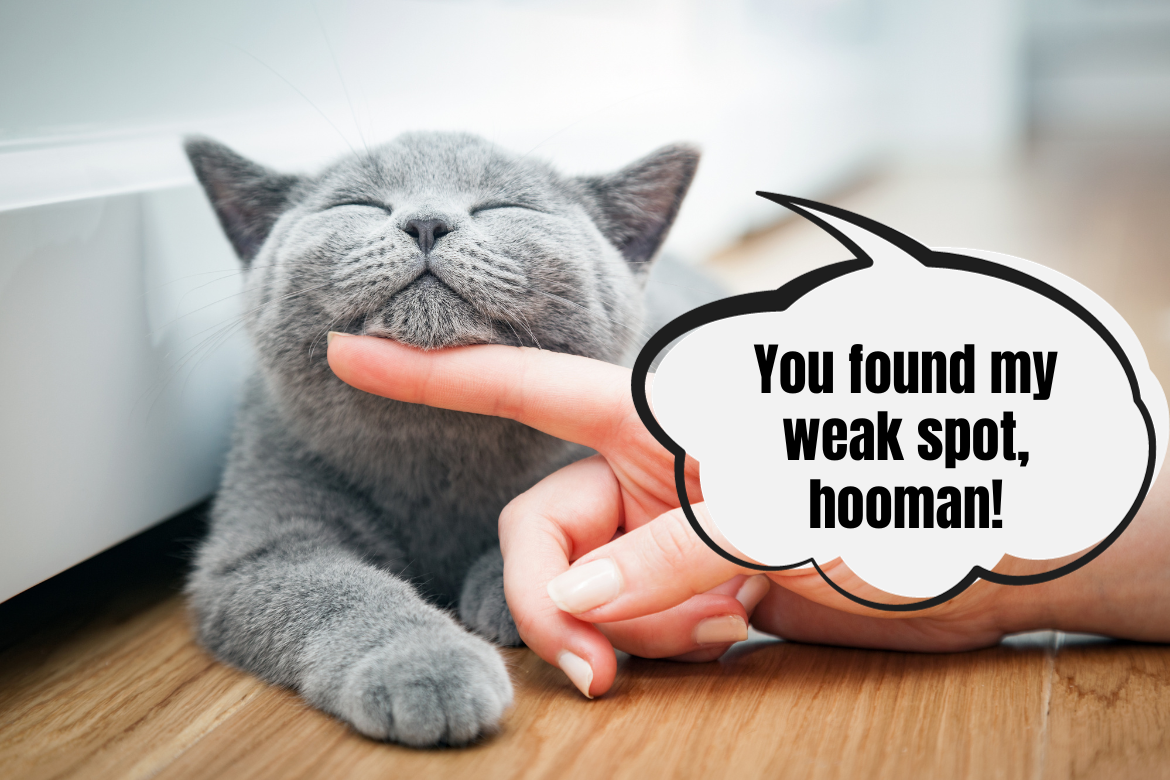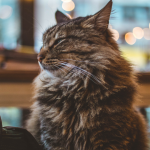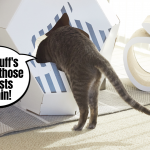Petting a cat is no easy task! It’s a mission akin to Olympic sports, which may seem simple on the TV screen but without the right strategy and technical preparation, success is uncertain. Don’t worry, though, fabCat – there’s a place for everyone in this sport. If you want to become a master of cat relationships and delve into the mysterious art of petting, we have a handful of proven tips confirmed by the cats from Team MyKotty. Ready for training? Let’s begin 🙂
To stroke or not to stroke? That is the question.
In the discipline known as cat petting, two players are involved: the human and the cat. Even though the human performs the petting task, success also depends on the cat’s involvement. If the furball is not in the mood for affection, even the most experienced petter in the world will have to back off. Don’t see it as a failure, though, fabCat – the skill of leaving the cat alone when it doesn’t want to be petted is commendable. It’s a sign that you’re an aware Guardian who can read cat body language.
Not every cat likes to be petted, and not every moment of the day is suitable for stroking. Cats may vary in their boldness in human interactions, they may need more time to overcome reservations before getting closer to the petter’s hand. Some cats may simply not enjoy close contact throughout the day and reserve the privilege of being petted for special occasions. And that’s perfectly fine – every cat has the right to it. And there are, of course, some furballs that will occupy your lap as soon as you sit on the couch. In their case, achieving mastery in petting requires minimal human effort. However, when your cat presents you with a challenge, fabCat, it’s good to know how to succeed.
How to read cat body language?
Recognizing cat body language is the first step in mastering the secret art of petting cats. Whether we know the cat or meet them for the first time, they will always try to communicate through their movements, body positioning, gaze, ear and whisker placement, indicating whether they desire affection or not. Typically, a cat that likes to be petted or is in the mood will try to initiate contact and elicit the appropriate human response.
How do you know if a cat is ready for strokes? They may rub against you (with their head or entire body), gently tap you with their paw to get your attention, playfully roll over and present themselves, or knead you while purring happily. When the cat has had enough, and you’ve reached your petting limit, their body language will change. You might notice a slow (and increasingly intense) swaying of the tail, attempts to move away from you, or even paw swats or nibbles. The latter are usually reserved for times when a human ignores the cat’s other signals. If you respect the cat’s decision to end the affection, you have a better chance of them coming back to you for more. They knows they will get exactly what they need at that moment – nothing forced 🙂
3 x YES – where to stroke a cat to make them happy?
Time to step into the ring and turn the theory of petting into practice. This also requires proper preparation because there are as many petting techniques and strategies as there are cat-human pairs in the world! As a rule, each cat may have their favorite spots to be petted and areas considered a No-Touch Zone. However, some areas are generally safe, and most cats should not have an issue with them. To achieve petting success, start with gentle strokes in the following areas:
- Between and behind the ears,
- Above the nose,
- Along the head,
- Under the chin,
- On the lower back, just above the tail base (the so-called golden point).
To pave your way to success from the beginning, you can start petting by extending one finger toward the cat and allowing them to approach and rub against you. The more the cat trusts you, the more willingly they will present the parts of their body they believe deserve a bit of affection.
And what technique should you choose? There are several schools of thought, and the right choice depends on the cat’s character and your relationship. Some cats accept only short sessions of gentle petting, while others may prefer scratching or even patting. It’s safer to start with light, non-abrupt movements and stay away from No-Touch Zones, which include the belly, paws, and the area around the hind legs and tail. And remember – always stroke the cat “with the fur” – cat skin is sensitive to touch, and stroking against the direction of hair growth can be too intense for the feline.
Why do cats like to be petted?
Finally, let’s unravel the mystery that often pops up in our minds: why do cats even like to be petted? For us, hoomans, it’s undoubtedly a pleasure to interact with such soft fur, but what’s in it for the cats? It turns out that the pleasure of being petted is not the only reason cats cozy up to us.
- Territory marking: To mark their territory, cats rub their face (and entire body) against various objects and their humans. Petting has the same effect, but the cat doesn’t have to work as hard! This also makes sense why cats love being petted around their face and ears – those spots feature some most important scent glands.
- Building trust: Contrary to common myths, cats form strong bonds with their humans and want to build do so. Petting is their version of spending quality time together – their way of having a chat with a friend.
- Sense of security: As kittens, cats rely on their mother to provide a sense of security and comfort by licking their fur. Cats don’t expect the same behavior from us, hoomans, but petting is similar enough for them to see it as a way to seek safety on their Guardian’s lap.
What are your experiences with petting cats, fabCats? Are you ready to compete in the Petting Olympics, or are you still breaking the ice with your furballs and refining the technique of proper petting? Let us know in the comments and share your cats’ favorite petting spots! 🙂




